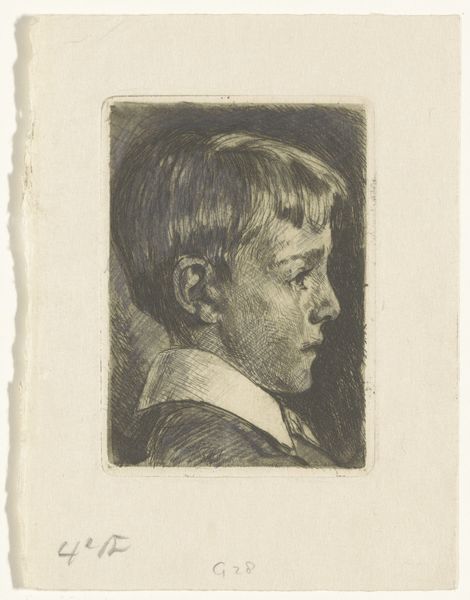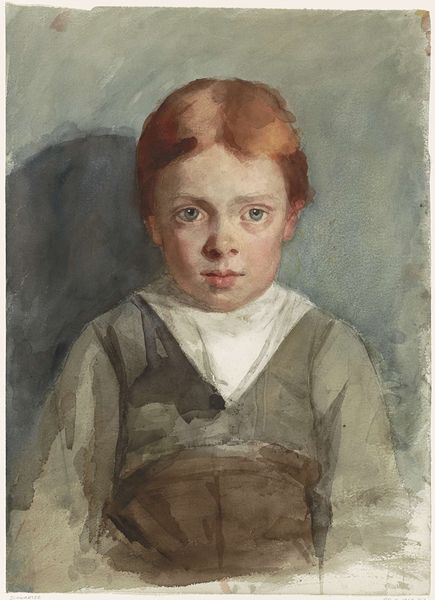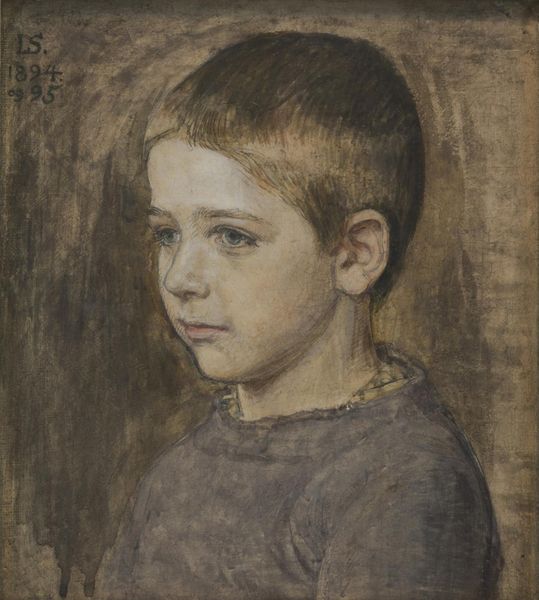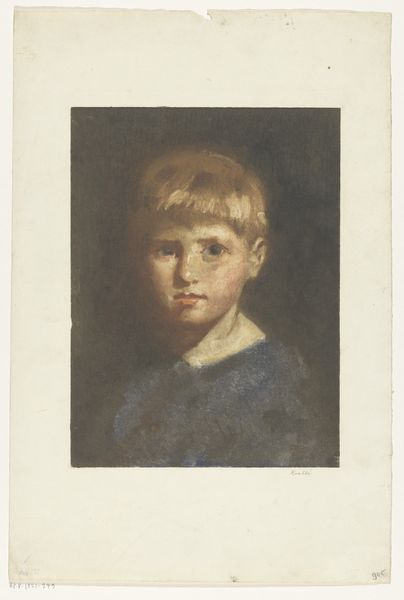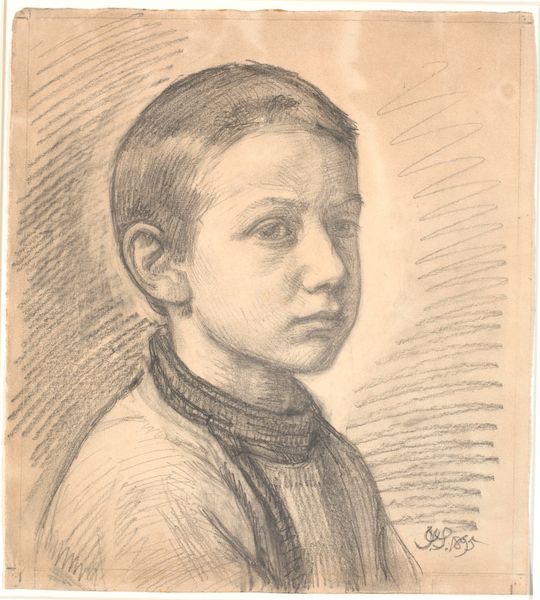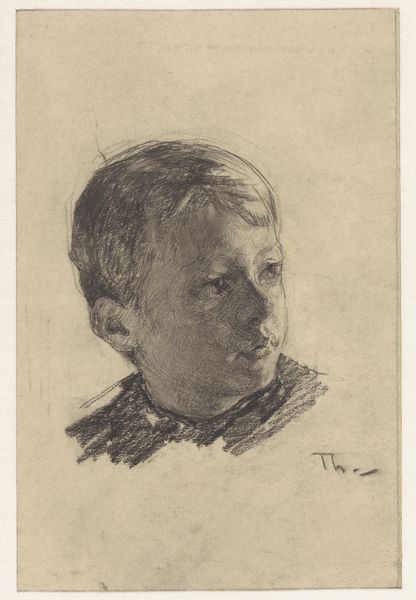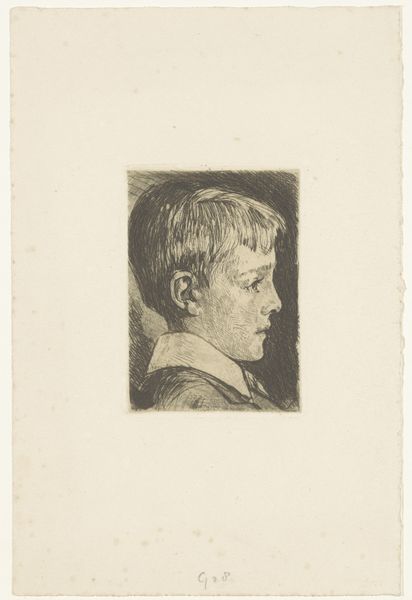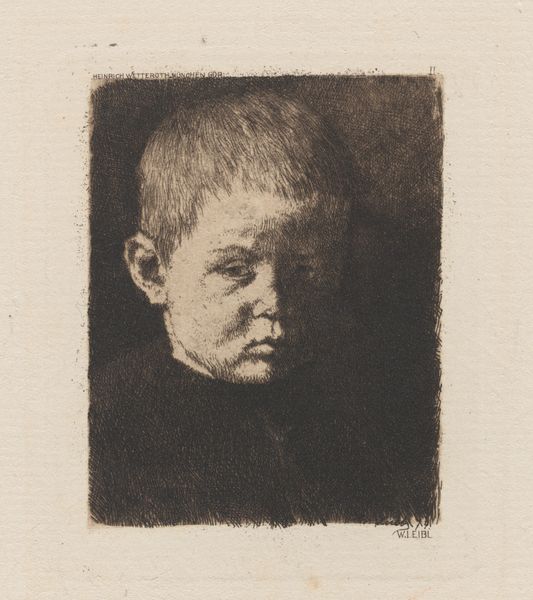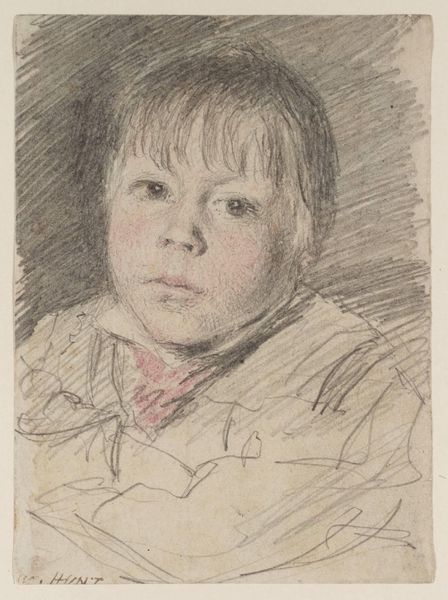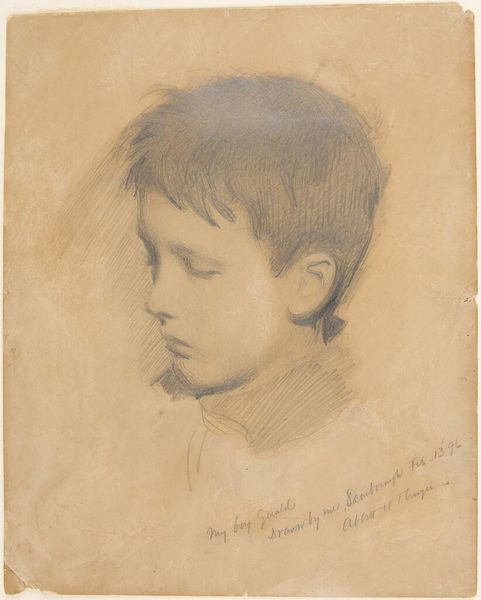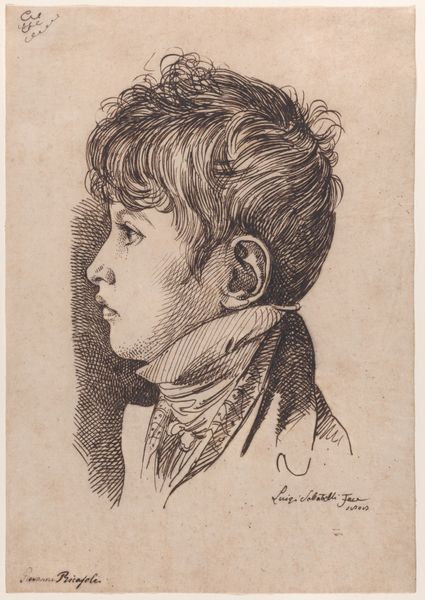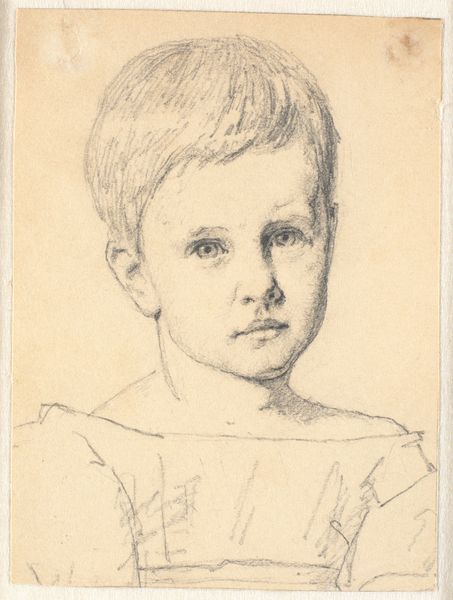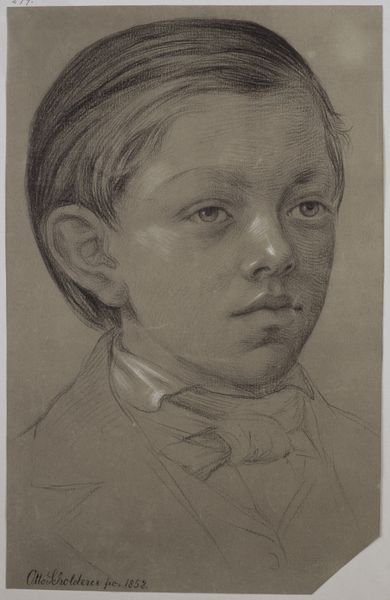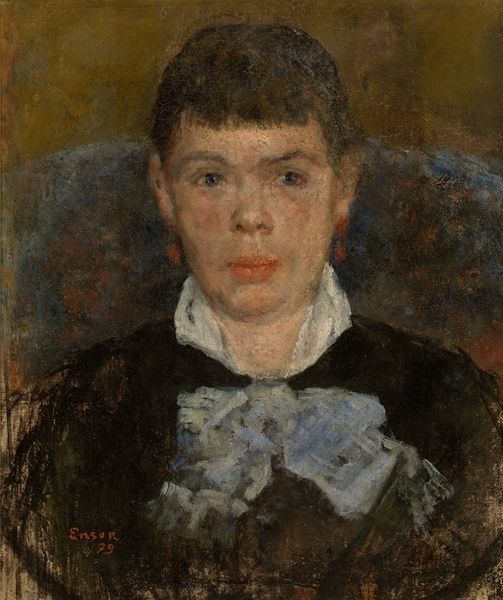
Dimensions: height 178 mm, width 125 mm
Copyright: Rijks Museum: Open Domain
Curator: Willem Witsen, a Dutch artist from the late 19th and early 20th centuries, created this drawing titled "Jongenskop", sometime between 1870 and 1923. The piece combines pencil and watercolor on paper, and you can find it here at the Rijksmuseum. Editor: The first thing that strikes me is how muted and serious the portrait is, particularly with the blue watercolor wash in the background contrasting with the warm fleshy tones of the child’s face. Curator: Interesting observation! Considering the artistic climate of the period, it would have been crucial to choose these materials specifically; watercolor provides an excellent medium for portraying softer effects such as light falling on the child's face, while pencil defines the underlying structure and bones. The social class represented also seems relevant, especially for art buyers from the period. Editor: Yes, his downwards gaze makes him seem lost in thought. Blue often symbolizes melancholy; in portraits of young children, it might represent the burdens of youth. Considering it as an image within a cultural dialogue about innocence and the realities of childhood, his solemn look tells a larger symbolic story. Curator: Your insight into symbolism adds depth to our understanding. The choice to use accessible materials like pencil and watercolor is itself significant, perhaps challenging more traditional, labor-intensive oil portraits. These media offered flexibility, enabling artists like Witsen to experiment while possibly addressing issues of class, status, and the availability of leisure time. Editor: It makes me wonder what Witsen intended the work to communicate, not just about the individual boy, but about childhood itself. Perhaps he saw the loss of innocence within him? The artwork evokes a sense of fragility that echoes the temporary nature of youth, and watercolor further enhances this sense with its inherent transparency. Curator: Precisely! Analyzing it from a materialist perspective, one can see that this work, far from being a straightforward representation, serves as an engagement with the means of art-making, production, consumption, and how class is portrayed through accessible and economical artistic approaches. Editor: It seems we both find intriguing avenues into interpreting Witsen's "Jongenskop" - mine in the symbolic resonance, yours in material conditions and artistic agency.
Comments
No comments
Be the first to comment and join the conversation on the ultimate creative platform.
